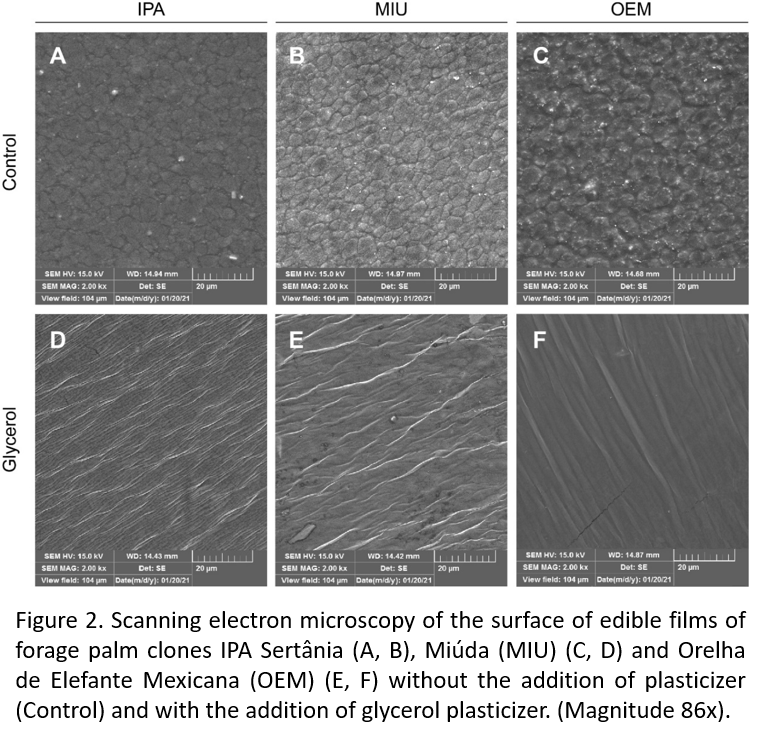Preparation and characterization of a biodegradable film from cactus Nopalea sp.
DOI:
https://doi.org/10.56890/jpacd.v24i.507Keywords:
Edible film, Fourier Transform Infrared Mucilage, Nopalea cochinillifera, Opuntia stricta, scanning electron microscopyAbstract
The increasing use of natural biodegradable polymers is a consequence of the concern of society with sustainability. Mucilage of forage cactus of the genus Nopalea is an attractive polymer matrix for the composition of edible films. Most studies on biodegradable films are carried out with the genus Opuntia. This makes Nopalea an important source of interest in the investigation of film formation. The objective was to study the formulation of films and evaluation of physical, optical, and mechanical characteristics of clones of Nopalea and Opuntia, through the addition of water and glycerol. The mucilage was extracted from cladodes of Nopalea cochenillifera Salm Dyck: clones IPA Sertânia (IPA) and Miúda (MIU); and, from Opuntia stricta [Haw.] Haw., clone Orelha de Elefante Mexicana (OEM). The powdered mucilage was hydrated and vacuum filtered, followed by the formulation of the films, without glycerol (just water) and with the addition of glycerol at 15%, 25%, and 14% for IPA, MIU, and OEM clones, respectively. The yield of powdered mucilage was higher for Nopalea. Optical tests with the films revealed that the addition of glycerol generated slightly yellow films (positive b* values), with less transparency than the control films, regardless of the clone and higher L* value in IPA clone films. Moisture content and thickness were increased when glycerol was added. All films, with and without glycerol, showed high water solubility. The microstructure revealed that the films with glycerol presented more compact, smooth, and linear surfaces, forming a homogeneous network. The FTIR spectra revealed that the glycerol films showed the same profile as the control samples, but with higher absorption intensities in some bands. The results found in the present work evidence the potential of the genus Nopalea to produce biodegradable films, as already widely known for the genus Opuntia.
Publication Facts
Reviewer profiles N/A
Author statements
Indexed in
- Academic society
- Journal of the Professional Association for Cactus Development
- Publisher
- Professional Association for Cactus Development




